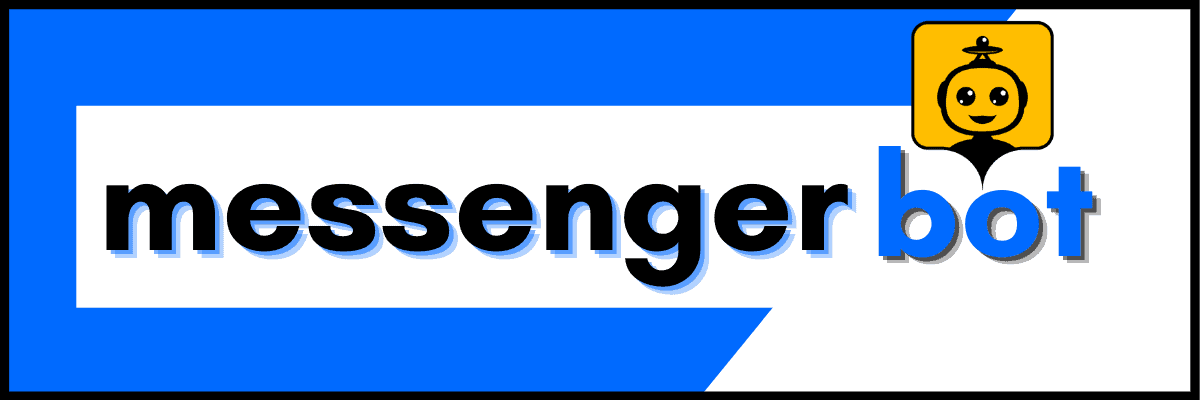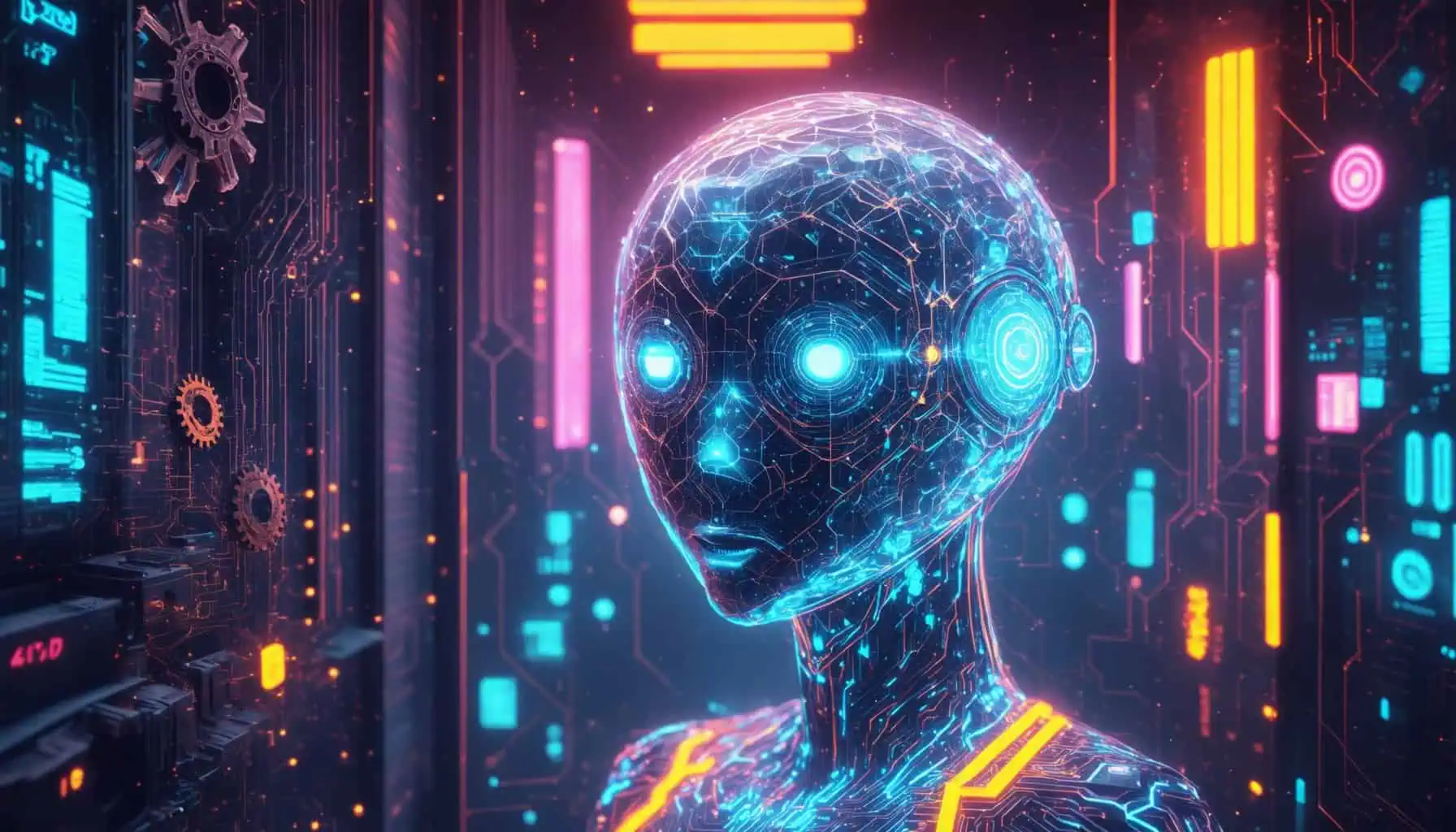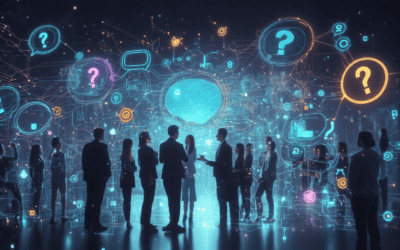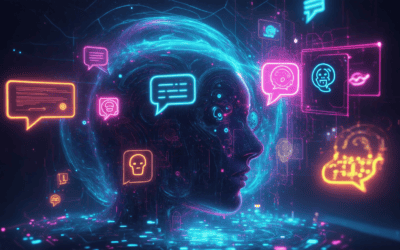Key Takeaways
- Learn how to create your own AI chatbot using natural language processing (NLP) for enhanced user engagement.
- Discover the benefits of building your own AI bot, including cost-effectiveness, 24/7 availability, and customization.
- Follow a structured approach to build your AI chatbot, from defining its purpose to testing and iterating.
- Avoid common pitfalls such as neglecting user intent and overcomplicating conversations to ensure a smooth user experience.
- Utilize programming languages like Python and frameworks like Dialogflow to streamline your chatbot development process.
In today’s digital landscape, the ability to create your own AI chatbot has become an invaluable skill for businesses and individuals alike. This comprehensive guide will walk you through the essential steps to build your own AI bot from scratch, exploring everything from the basics of AI chatbots to the tools and platforms that make customization a breeze. Whether you’re interested in creating an AI chatbot for customer service, personal use, or simply to enhance your tech skills, this article will provide you with the insights you need. We will delve into the benefits of making your own AI chatbot, evaluate free options for development, and offer a step-by-step approach to ensure your project is successful. By the end of this guide, you’ll be equipped with the knowledge to confidently make your own AI bot and understand the costs involved in the process. Join us as we unlock the potential of AI technology and empower you to create your own AI chatbot today!
Create your own AI chatbot for free: An Overview
Understanding the Basics of AI Chatbots
Creating your own AI chatbot can be an exciting and rewarding project. AI chatbots are automated systems designed to simulate conversation with users, providing assistance and information across various platforms. They utilize natural language processing (NLP) to understand user queries and respond intelligently. By integrating AI technology, these chatbots can enhance customer engagement, streamline communication, and improve overall user experience.
Benefits of Creating Your Own AI Chatbot
There are numerous advantages to creating your own AI chatbot. Here are some key benefits:
- Cost-Effective Solution: Building your own chatbot can save costs associated with customer service and support. By automating responses, businesses can reduce the need for extensive human resources.
- 24/7 Availability: An AI chatbot can operate around the clock, providing instant responses to customer inquiries at any time, enhancing user satisfaction.
- Customization: You have the flexibility to tailor your chatbot’s features and functionalities to meet specific business needs and customer preferences.
- Lead Generation: A well-designed chatbot can effectively capture leads by engaging users and guiding them through the sales funnel.
- Data Collection: Chatbots can gather valuable insights from user interactions, helping businesses understand customer behavior and preferences.
By leveraging these benefits, you can significantly enhance your digital communication strategy and improve customer interactions. For a step-by-step guide on how to create your own AI chatbot, check out our Messenger bot tutorials.
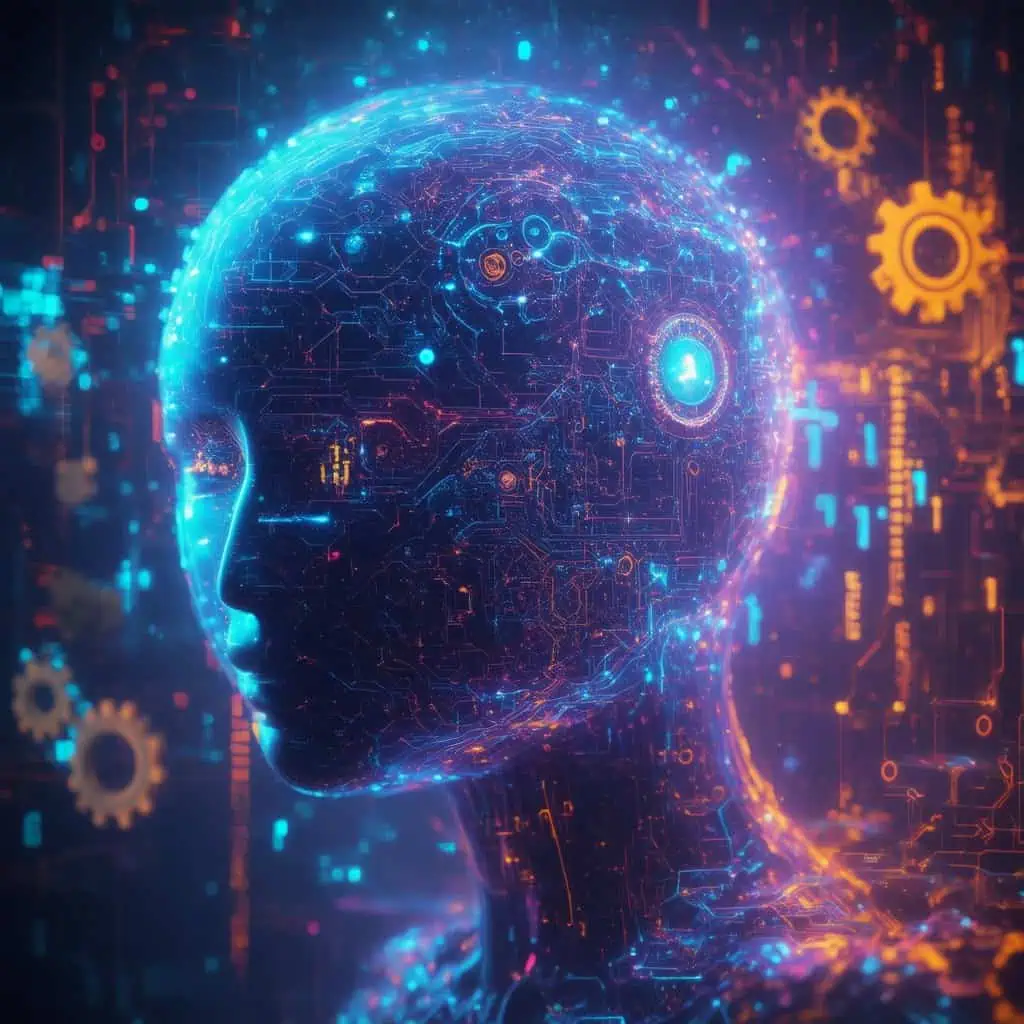
Create Your Own AI Chatbot for Free: An Overview
Creating your own AI chatbot can seem daunting, but understanding the basics is the first step toward building a functional and engaging bot. AI chatbots are designed to automate conversations and provide users with instant responses, enhancing customer interaction and satisfaction. In this section, we will explore the foundational elements of AI chatbots and the benefits of creating your own.
Understanding the Basics of AI Chatbots
AI chatbots utilize natural language processing (NLP) and machine learning to understand and respond to user inquiries. These bots can be programmed to handle a variety of tasks, from answering frequently asked questions to guiding users through complex processes. To create your own AI chatbot, you need to grasp the following key concepts:
- Natural Language Processing (NLP): This technology allows chatbots to interpret and respond to human language in a way that feels natural and intuitive.
- Machine Learning: By leveraging machine learning algorithms, chatbots can improve their responses over time based on user interactions.
- Integration Capabilities: A good chatbot should integrate seamlessly with various platforms, such as social media and websites, to enhance user engagement.
For those interested in a more advanced solution, Brain Pod AI offers a multilingual AI chat assistant that can be customized to fit your specific needs, making it easier to make your own AI chatbot without extensive coding knowledge.
Benefits of Creating Your Own AI Chatbot
There are numerous advantages to creating your own AI chatbot. Here are some key benefits:
- Cost-Effective Customer Support: Automating responses can significantly reduce the need for human customer service representatives, saving time and resources.
- 24/7 Availability: AI chatbots can operate around the clock, providing users with immediate assistance regardless of the time of day.
- Personalization: By tailoring the chatbot’s responses based on user data, businesses can create a more personalized experience that enhances customer satisfaction.
By understanding the basics and recognizing the benefits, you are well on your way to creating your own AI bot that can improve user engagement and streamline communication.
How to Create an AI Bot Like ChatGPT?
Creating your own AI bot, similar to ChatGPT, involves understanding the essential components and the programming languages that will bring your vision to life. By following a structured approach, you can build your own AI chatbot that meets your specific needs and engages users effectively.
Essential Components for Creating Your Own AI Bot
- Natural Language Processing (NLP): This is the backbone of any AI chatbot. Implementing NLP allows your bot to understand and respond to user queries in a human-like manner. Tools like Brain Pod AI’s chat assistant can enhance your bot’s conversational abilities.
- Machine Learning Algorithms: These algorithms enable your bot to learn from interactions and improve over time. Utilizing frameworks like TensorFlow or PyTorch can help you develop sophisticated models.
- Integration Capabilities: Ensure your AI bot can integrate with various platforms, such as social media and websites. This will enhance its usability and reach.
- User Interface Design: A user-friendly interface is crucial for engagement. Design your chatbot to be intuitive and easy to navigate.
Programming Languages and Frameworks for AI Development
When it comes to programming languages, several options can help you create your own AI chatbot:
- Python: Widely used for AI development due to its simplicity and the vast array of libraries available, such as NLTK and spaCy for NLP tasks.
- JavaScript: Essential for web-based chatbots, allowing seamless integration with web applications.
- Java: Known for its scalability, Java is suitable for building robust AI systems.
- Frameworks: Consider using frameworks like Dialogflow or IBM Watson Assistant to streamline the development process.
By focusing on these essential components and programming languages, you can effectively build your own AI bot that not only functions well but also provides a valuable user experience. For a quick start, check out our guide on how to set up your first AI chatbot.
How to Create an AI Bot Like ChatGPT?
Creating an AI bot like ChatGPT involves several key steps that require a solid understanding of AI principles and programming. Here’s a comprehensive guide to help you through the process:
- Understand the Basics of AI and NLP: Familiarize yourself with artificial intelligence (AI) and natural language processing (NLP) concepts. Resources like “Artificial Intelligence: A Guide to Intelligent Systems” by Michael Negnevitsky and online courses from platforms like Coursera or edX can provide foundational knowledge.
- Define Your Chatbot’s Purpose: Clearly outline what you want your chatbot to achieve. Whether it’s for customer service, entertainment, or educational purposes, having a defined goal will guide your development process.
- Set Up Your Development Environment: Choose a programming language (Python is highly recommended due to its extensive libraries for AI) and set up your development environment. Tools like Jupyter Notebook or integrated development environments (IDEs) such as PyCharm can be beneficial.
- Obtain OpenAI API Key: Sign up for access to the OpenAI API, which powers ChatGPT. Visit the OpenAI website to create an account and obtain your API key, which is essential for integrating the model into your application.
- Install Necessary Libraries: Use libraries such as
openai,requests, andFlask(for web applications) to facilitate communication with the OpenAI API. You can install these libraries using pip. - Create Your Chatbot Script: Write the code that will handle user inputs and generate responses using the OpenAI API. This is where you will implement the logic for your AI bot.
- Test and Iterate: Conduct thorough testing to ensure your chatbot responds accurately and effectively. Gather user feedback and make necessary adjustments to improve performance. Utilize analytics tools to track interactions and refine your bot’s capabilities.
- Consider Integration with Messaging Platforms: If you want to deploy your chatbot on platforms like Facebook Messenger, explore their API documentation for integration guidelines. This can enhance user engagement and accessibility.
Essential Components for Creating Your Own AI Bot
When embarking on the journey to create your own AI chatbot, several essential components must be considered:
- Natural Language Processing (NLP): This is the backbone of any AI chatbot. Understanding how to process and interpret human language is crucial for creating effective interactions.
- Machine Learning Algorithms: Implementing algorithms that allow your bot to learn from interactions will enhance its ability to provide relevant responses over time.
- User Interface Design: A well-designed interface improves user experience. Consider how users will interact with your bot and ensure the design is intuitive.
- Data Management: Efficiently managing user data and interactions is vital for personalizing responses and improving engagement.
- Integration Capabilities: Ensure your bot can integrate with various platforms, such as social media and websites, to maximize its reach and functionality.
Programming Languages and Frameworks for AI Development
To build your own AI bot, selecting the right programming languages and frameworks is essential:
- Python: Widely used for AI development due to its simplicity and the availability of libraries like TensorFlow and PyTorch.
- JavaScript: Ideal for web-based applications, allowing for seamless integration with front-end technologies.
- Node.js: A powerful framework for building scalable network applications, particularly useful for real-time interactions.
- Java: Known for its portability and performance, making it suitable for large-scale applications.
- R: Useful for statistical analysis and data visualization, which can enhance the chatbot’s learning capabilities.

How to Build an AI Chatbot from Scratch?
Building your own AI chatbot can be an exciting venture, allowing you to tailor the bot to meet your specific needs. This section will guide you through the comprehensive approach to create your own AI chatbot, ensuring you have all the essential components and best practices at your disposal.
Key Steps in the Development Process
When you decide to make your own AI chatbot, following a structured development process is crucial. Here are the key steps to consider:
- Define Your Purpose: Clearly outline what you want your chatbot to achieve. Whether it’s customer support, lead generation, or providing information, having a defined purpose will guide your development.
- Choose the Right Platform: Select a platform that suits your needs. Options like Messenger Bot offer user-friendly interfaces for building chatbots without extensive coding knowledge.
- Design the Conversation Flow: Map out how interactions will occur. This includes creating a flowchart of potential user queries and the corresponding bot responses.
- Develop and Train Your Bot: Utilize machine learning and natural language processing (NLP) to train your bot. This step is crucial for ensuring your chatbot can understand and respond accurately to user inputs.
- Test and Iterate: Before launching, conduct thorough testing to identify any issues. Gather feedback and make necessary adjustments to improve user experience.
Best Practices for Creating Your Own AI Chatbot
To ensure your chatbot is effective and user-friendly, consider these best practices:
- Keep It Simple: Avoid overly complex interactions. Users appreciate straightforward and intuitive conversations.
- Incorporate Personalization: Use data to personalize interactions. This can enhance user engagement and satisfaction.
- Provide Clear Instructions: Guide users on how to interact with your chatbot. Clear prompts can help users navigate the conversation more effectively.
- Monitor Performance: Regularly analyze your chatbot’s performance metrics. This will help you identify areas for improvement and ensure it meets user needs.
- Stay Updated: Keep your chatbot updated with the latest information and features to maintain relevance and effectiveness.
Creating an AI Chatbot: Tips and Best Practices
When embarking on the journey to create your own AI chatbot, it’s essential to be aware of common pitfalls and strategies that can enhance user experience. By understanding these tips and best practices, you can ensure that your chatbot not only meets user expectations but also stands out in a competitive landscape.
Common Mistakes to Avoid When Making Your Own AI Chatbot
- Neglecting User Intent: Failing to accurately define user intents can lead to misunderstandings and frustration. Always prioritize understanding what users want to achieve when they interact with your chatbot.
- Overcomplicating Conversations: Keep the conversation flow simple and intuitive. Users should be able to navigate through interactions without confusion. Aim for clarity in responses.
- Ignoring Testing: Skipping the testing phase can result in a poorly functioning chatbot. Regularly test your bot with real users to gather feedback and make necessary adjustments.
- Not Utilizing Analytics: Failing to monitor performance metrics can hinder your chatbot’s improvement. Use analytics tools to track user interactions and identify areas for enhancement.
Enhancing User Experience with Your AI Bot
To create a successful AI chatbot, focus on the following strategies:
- Personalization: Tailor interactions based on user data and preferences. A personalized experience can significantly improve user satisfaction and engagement.
- Multilingual Support: Consider implementing multilingual capabilities to cater to a diverse audience. This feature can enhance accessibility and broaden your chatbot’s reach.
- Continuous Learning: Implement machine learning algorithms that allow your chatbot to learn from interactions over time. This adaptability can lead to more accurate responses and improved user experience.
- Integrating E-Commerce Features: If applicable, include functionalities that support e-commerce, such as cart recovery and direct selling. This can streamline the shopping experience for users.
By avoiding common mistakes and focusing on enhancing user experience, you can successfully build your own AI chatbot that meets the needs of your audience and stands out in the market.
Creating an AI Chatbot: Tips and Best Practices
When embarking on the journey to create your own AI chatbot, it’s essential to understand the common pitfalls and strategies that can enhance the overall user experience. By following best practices, you can ensure that your chatbot not only functions effectively but also engages users in meaningful ways.
Common Mistakes to Avoid When Making Your Own AI Chatbot
- Neglecting User Intent: One of the biggest mistakes is failing to understand what users expect from your chatbot. Conduct thorough research to identify user needs and tailor your bot’s responses accordingly.
- Overcomplicating Conversations: Keep interactions simple and intuitive. Avoid using jargon or complex language that may confuse users. Aim for clarity and brevity in your chatbot’s dialogues.
- Ignoring Feedback: User feedback is invaluable. Regularly analyze interactions and adjust your chatbot’s responses based on user experiences to improve engagement.
- Inadequate Testing: Before launching your chatbot, conduct extensive testing to identify bugs and ensure smooth functionality. This step is crucial for providing a seamless user experience.
- Failing to Update Content: Regularly update your chatbot’s knowledge base and responses to reflect changes in your business or user expectations. Stale content can lead to user frustration.
Enhancing User Experience with Your AI Bot
To maximize the effectiveness of your AI chatbot, consider implementing the following strategies:
- Personalization: Use data to personalize interactions. Tailoring responses based on user behavior and preferences can significantly enhance user satisfaction.
- Multilingual Support: If your audience is diverse, consider integrating multilingual capabilities. This feature allows your chatbot to communicate effectively with users from different linguistic backgrounds, broadening your reach.
- Interactive Elements: Incorporate buttons, quick replies, and rich media to make conversations more engaging. These elements can guide users and make interactions feel more dynamic.
- Analytics and Insights: Utilize analytics tools to monitor user interactions and gather insights. Understanding user behavior can help you refine your chatbot’s performance over time.
- Seamless Integration: Ensure that your chatbot integrates smoothly with existing systems and platforms. This integration can enhance functionality and provide a more cohesive user experience.
By avoiding common mistakes and focusing on enhancing user experience, you can successfully build your own AI chatbot that meets user needs and drives engagement.
